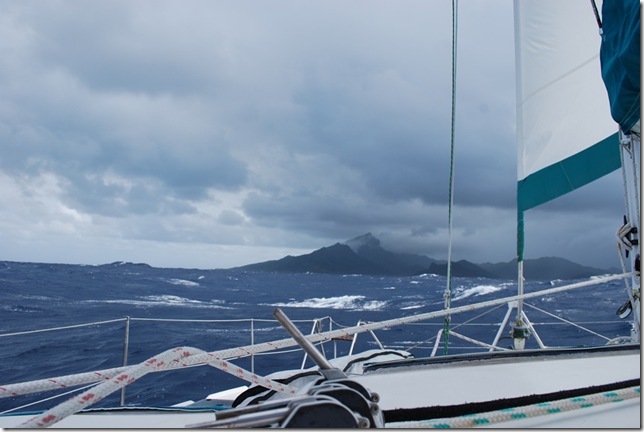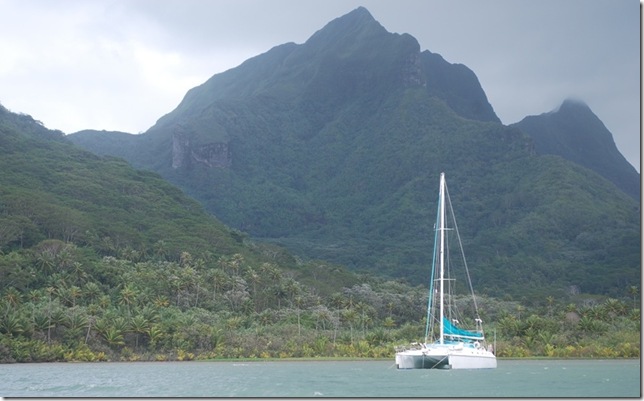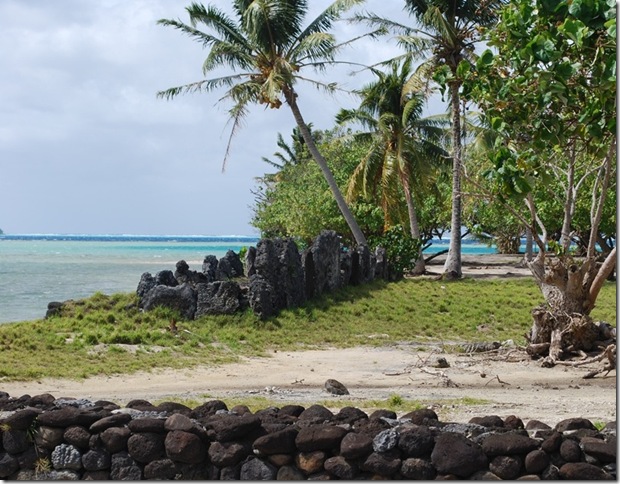Getting our anchor up in Huahine did turn out to be a bit of work, but for the wrong reason. On her dive yesterday, Lauren had worked to clear the chain from the coral, so bringing the chain in was easy until the boat was over the deeper water, where the windlass couldn’t bring it up and it appeared to be stuck.
I decided to dive on it and we made a plan. Lauren worked the bow and Tiff worked the helm. 5 minutes after I started down, they would let out 10 feet of chain, then 30 seconds later they would start the normal process of trying to bring the anchor up. I would be working down below to help clear things if they were fouled. My left ear is still bothering me, and I needed most of the 5 minutes to get down over the wall and to the bottom of the channel at 68 feet, where the anchor was just laying on the sandy bottom, barely dug in. Right on time, they started the attempt to pull the anchor up, but it wasn’t working even though I could see we weren’t stuck on anything. After a minute or two, I came up, made a decompression stop, and got back on board. It turned out the windlass clutch had loosened up and all we needed to do was tighten it. After tightening it with a wrench, the rest of the chain and windlass came right up (90 feet of 5/16″ chain, a 25 kg anchor, and a 30 lb mushroom anchor / kellet were a bit too much with the clutch loose) and we were off.
I had been pretty sure that I saw whales outside the pass on our way in, and just after we cleared the pass, I saw a the blow and back of a humpback straight ahead. We got to see the whale breach and raise its tail before diving several times. They’re big, of course, and their movements are in slow motion compared to the dolphins that we’re used to seeing. There was a blow, followed by the slow movement of the large back and small fin through the water before the tail broke out and raised almost straight up then disappeared below the waves. When we first spotted them directly ahead, they were close enough that I slowed the boat down to avoid a potential collision and to keep from disturbing them. The second time we saw them, we had passed over them and they were behind, between the boat and the pass. 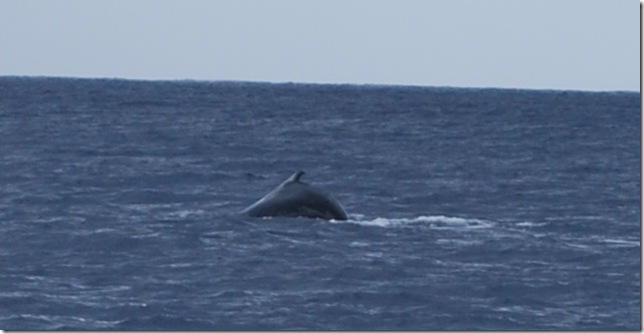
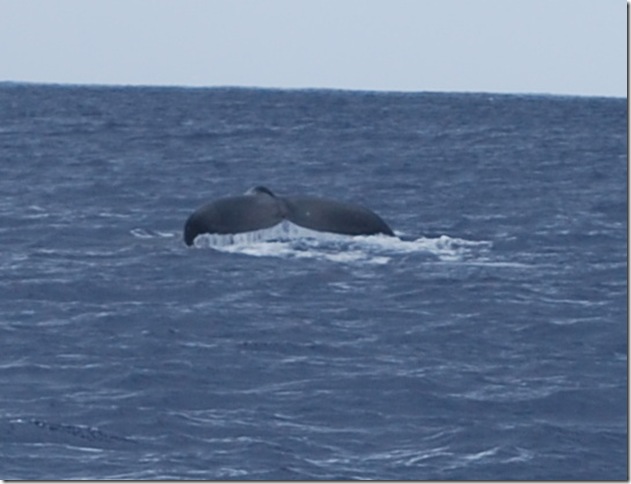
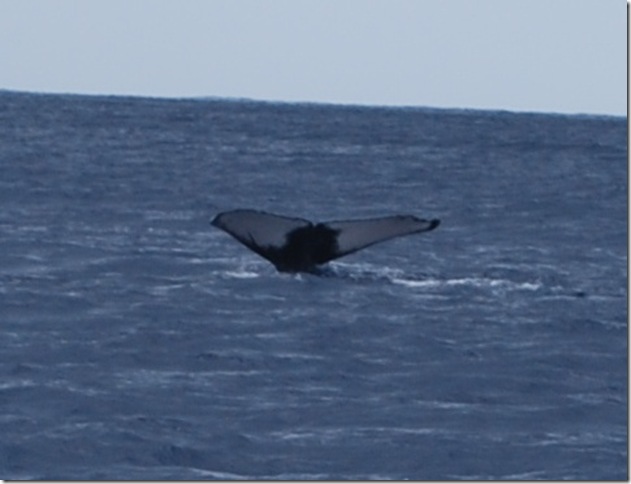
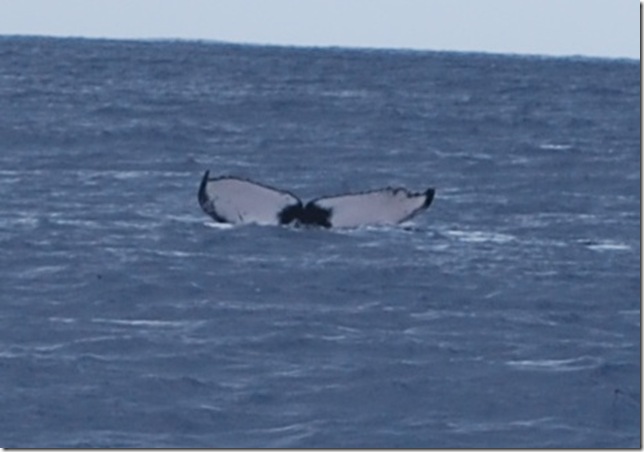
We’d chosen a lively day for the crossing but we were ready to move on, hurricane season is getting closer, and there was the potential need to look for an engine mechanic or part. The local weather predicted 20-25 knots and 3+ meter seas. They were pretty much right on. In the sustained gusts, we got up to a steady 7.3 knots on just the jib. For me, it is mesmerizing to watching 10-12 foot heaps of water rise up beside you then pass underneath you. I’m always amazed how well the boat rides up and over the seas when we aren’t trying to pound directly into them. It was a lively ride, but far from the worst we’ve had, and it made the passage go by quickly.
Te (The) Ava (Pass) Moa (Sacred) pass is narrow and deep, and although the cruising guide said it was practicable in strong winds, we had a backup plan for the next pass north in case the entrance was covered with breakers. Right in the middle of furling the jib, about a mile from the pass, a bee landed on my left palm and left his barb in my hand. That smarted a bit. The pass didn’t come into view until we were fairly close, but it was very calm and we motored into the lagoon with no problems at all. The pass ends at a point of land that separates two bays. The bay to the north is the site of Marae Taputapuatea, the largest and most important marae site in all of Polynesia. Before Europeans selected Tahiti as a capital for the region, the Raiatea was the most important island in the region due to its religious traditions and influence. Archeologists and historians generally believe that Raiatea was the legendary island and center of culture from which most of the rest of Polynesia (including Hawaii, Easter Island, and New Zealand) was discovered and colonized. The marae there served as an international marae, with people coming in canoes from far away to participate in ceremonies. It also served as a launching place for canoe voyages of discovery and colonization.
The bay to the left of the pass was reported to be sheltered and have excellent holding in a mud bottom, so we headed there to ride out another windy night at anchor. The mud did indeed provide excellent holding, and we got some much needed rest before Lauren and I headed out to see the marae the next morning. The site contained several maraes, all impressive in terms of their size and setting at the edge of the lagoon with a view of the ocean and Huahine. This marae and the ones in Huahine are a bit different than the ones in the Marquesas both in terms of their style of construction and because they use slabs of coral stone instead of the large volcanic boulders.
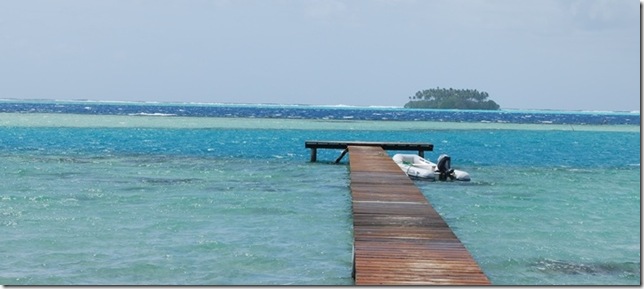 Our dinghy and the beautiful colors of the lagoon
Our dinghy and the beautiful colors of the lagoon
The port engine is still giving a low oil pressure alarm at low RPMs when it’s warm, so we decided to head to the north tip of Raiatea, where there is a concentration of charter companies and yachting business in the hopes that we can find another oil pressure regulator, and oil gauge to do some troubleshooting, or possibly a mechanic.
Along the way, we enjoyed one of the true pleasures of sailing the South Pacific — sailing through the lagoon in fresh tradewinds. Although the ocean outside the lagoon was worked up even worse than it was yesterday, inside the lagoon there was only a light chop. We were able to sail with the wind and chop northwards, up the east coast of Raiatea, with the beautiful mountains off to port and the pretty lagoon with the ocean breaking on the reef at its edge off to starboard. With only the jib up, we made just as good of time as if we were running both engines, but enjoyed a quiet, scenic sail instead.
We spent the night at Apooti Marina, home of the Moorings, Sunsail, and Tahiti charter businesses. The guidebook indicated that we could get technical assistance here, but they were only able to provide us with a phone number for a business in Papeete that could possibly put our part on a plane to Raiatea or Bora Bora. Oh well, they have showers, which is worth the $25 if they’re hot (we’ve heard they’re not, but we’ll see). We can see Bora Bora from here and are planning to head that way later today.
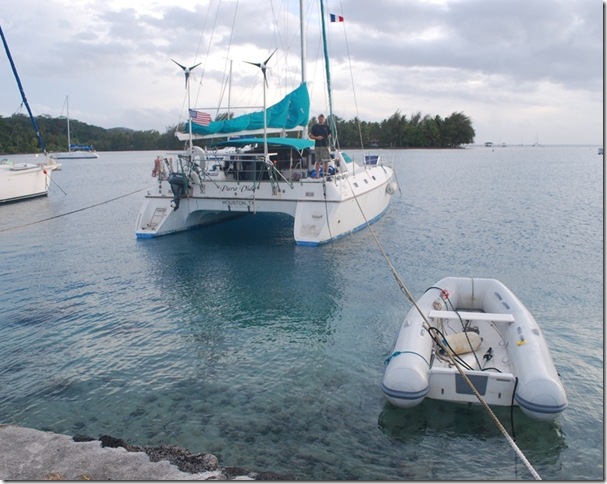 Tahitian mooring with the dinghy rigged to be pulled back and forth
Tahitian mooring with the dinghy rigged to be pulled back and forth


